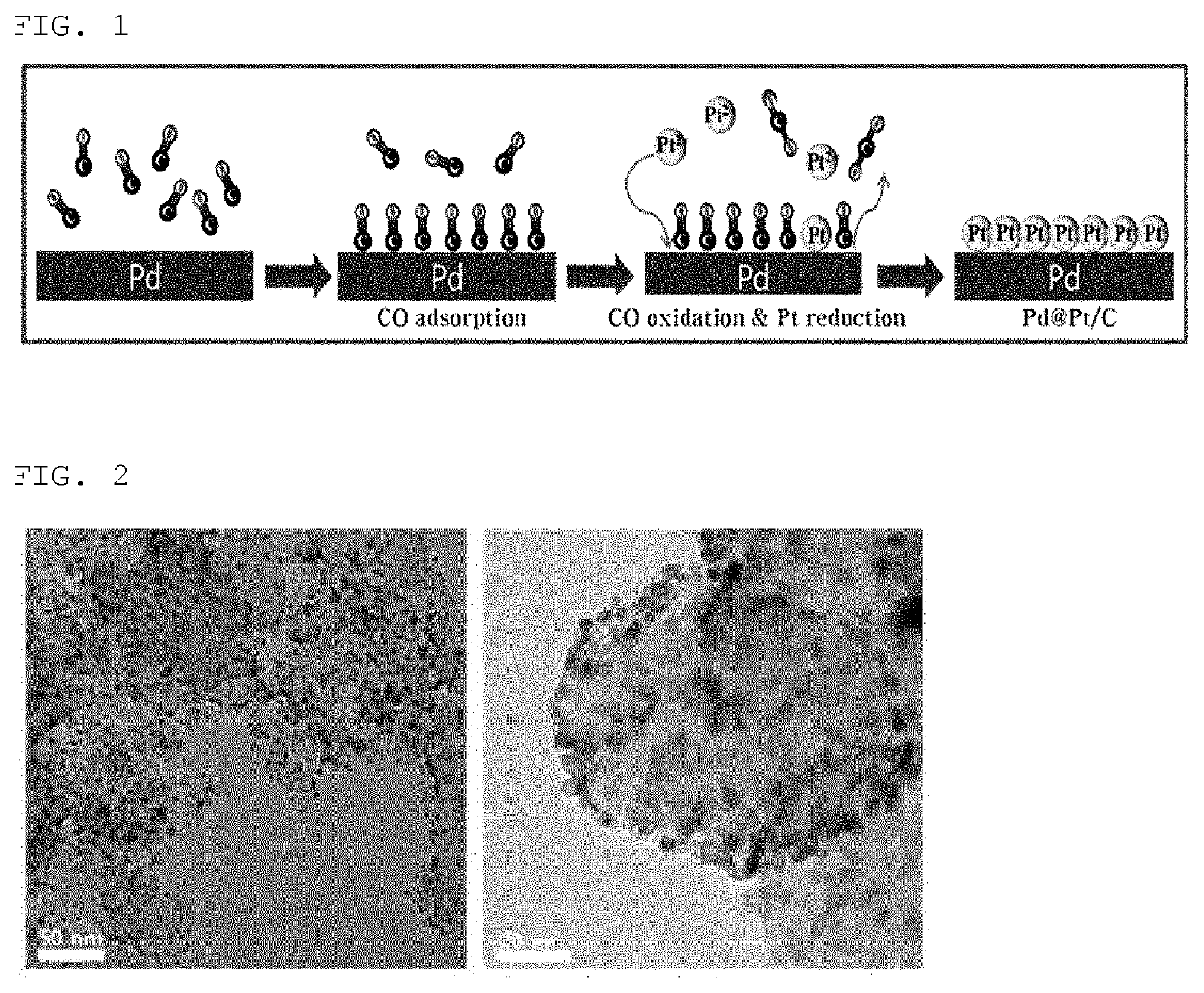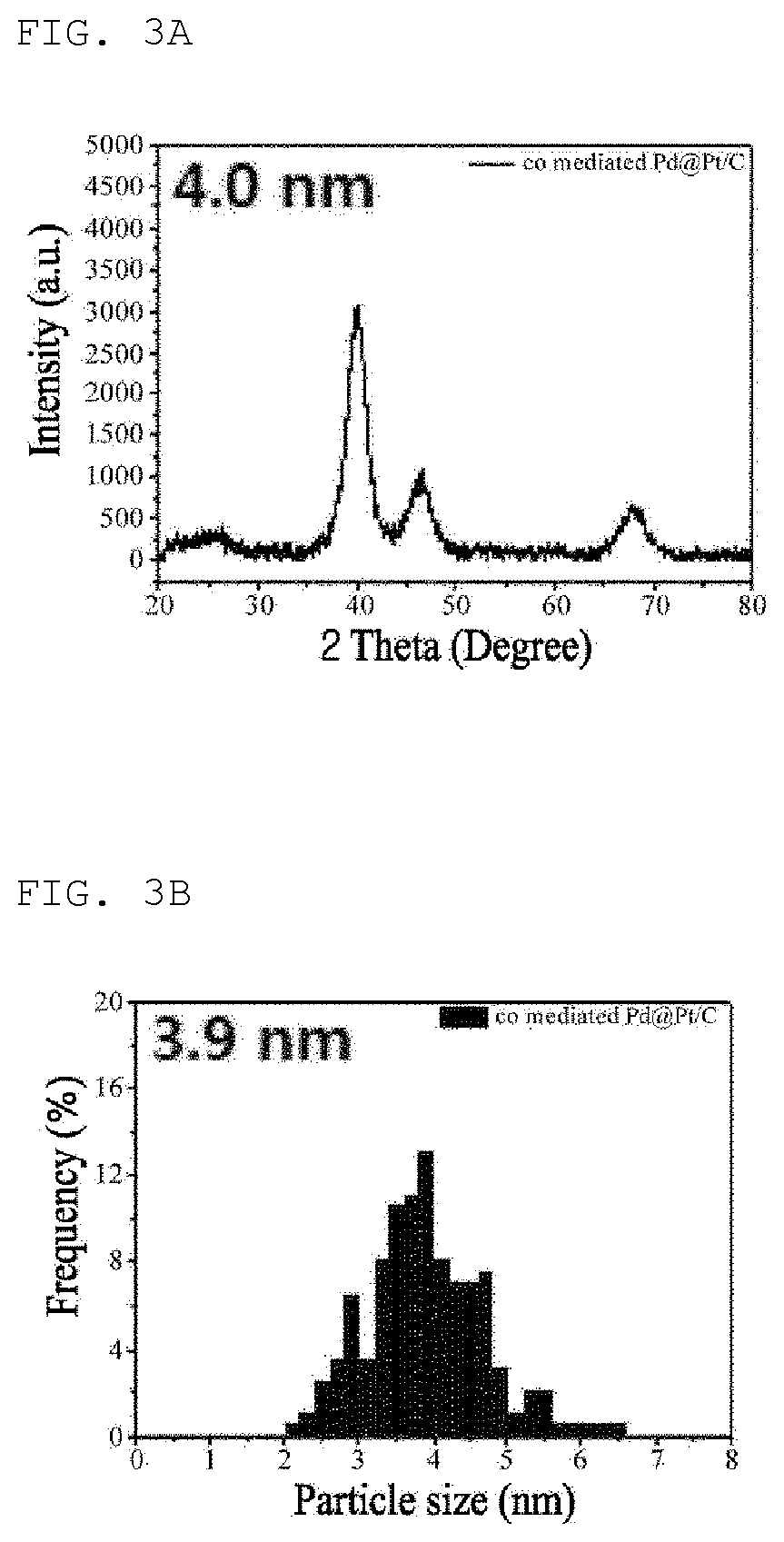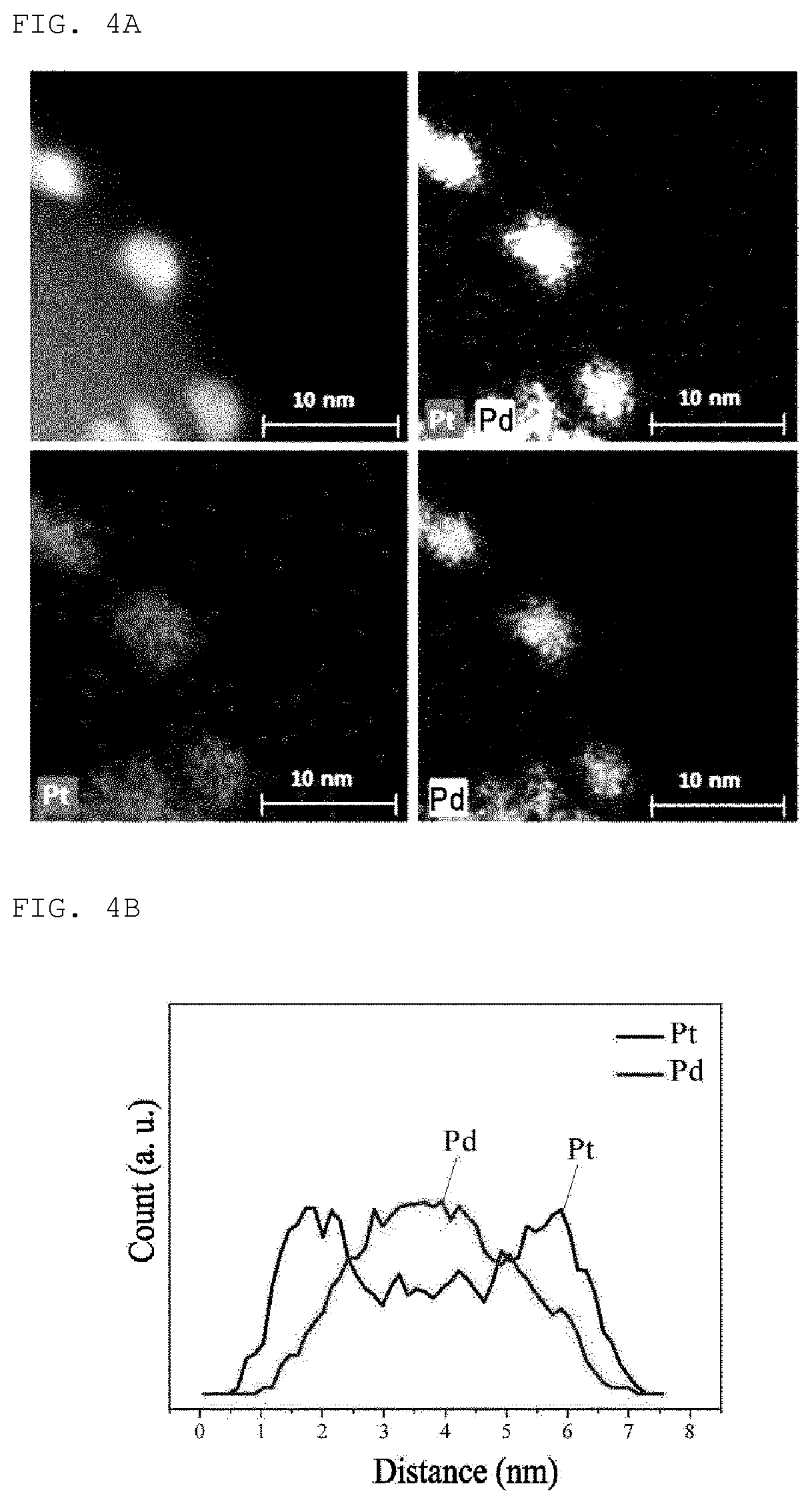Method for manufacturing core-shell particles using carbon monoxide
- Summary
- Abstract
- Description
- Claims
- Application Information
AI Technical Summary
Benefits of technology
Problems solved by technology
Method used
Image
Examples
example 1
[0068]A solution having the carbon particles dispersed therein was prepared by mixing 3.5 g of carbon particles (particle size of 20 to 100 nm, specific surface area of 100 to 400 m2 / g) with 1.5 L of ultrapure water, thereby dispersing the carbon particles in ultrapure water. At this time, the dispersion was performed in order of a batch-type ultrasonic disperser (rpm 4, 60 min, intensity max), a horn-type ultrasonic disperser (rpm max, 30 min, amp 25%), and a batch-type ultrasonic disperser (rpm 4, 30 min, intensity max).
[0069]After adding 15 ml of a PdCl2 solution (10% Pd solution) to the solution having the carbon particles dispersed therein, the PdCl2 solution was stirred in the solution having the carbon particles dispersed therein for 30 minutes to obtain a mixed solution.
[0070]Thereafter, pH of the mixed solution was adjusted to 11 using 1.0 M NaOH. A solution containing Pd / C particles having carbon monoxide adsorbed thereon was prepared by performing a nitrogen (N2) purge fo...
example 2
[0073]Pd@Pt_2ML / C in which Pt was coated with two atomic layers was manufactured by using Pd@Pt / C manufactured in Example 1 above as a reactant, and repeating the same process as in Example 1.
[0074]FIG. 2 is TEM photographs of core-shell particles manufactured in Example 1 according to the present disclosure, and it can be confirmed that the metals are well distributed on the carbon particles.
[0075]FIG. 3A is an XRD graph of the core-shell particles manufactured in Example 1 according to the present disclosure and FIG. 3B is an active metal particle size distribution graph thereof, and it can be confirmed that the size of the particles is a level of about 4.0 nm.
[0076]FIG. 4 is STEM-EDS analysis results of the core-shell particles manufactured in Example 1 according to the present disclosure, and it can be confirmed that a Pt monolayer is formed on Pd.
[0077]FIG. 5 is graphs of the voltammogram for the core-shell particles manufactured in Example 1 according to the present disclosure...
experimental example 1
[0080]A half-cell test was performed using particles (PdPt / C_CO) having a palladium core and a platinum shell formed thereon manufactured in Example 1 above. The results of the half-cell test are shown in Table 1 below.
TABLE 1ECSA [electrochemical active surface area] (m2 / g Pt)142.00ECSA [electrochemical active surface area] (m2 / g PGM)77.21MA1600rpm [mass activity] (A / mg Pt)0.67MA1600rpm [mass activity] (A / mg PGM)0.37SA [specific activity] (uA / cm2)475.68E1 / 2 [half-wave potential] (mV)905PGM; Platinum group metal
[0081]Further, Table 2 below shows the results of the half-cell test using the particles of Example 2, Comparative Example 1, and Comparative Example 2 according to the present disclosure.
TABLE 2ComparativeComparativeExample 1Example 1Example 2ECSA[electrochemical active142.055.987.4surface area] (m2 / g Pt )MA1600rpm [mass0.670.220.47activity] (A / mg Pt)
[0082]As shown in Table 2, Example 1 according to the present disclosure shows ECSA and mass activity that are about 3 times h...
PUM
| Property | Measurement | Unit |
|---|---|---|
| Fraction | aaaaa | aaaaa |
| Fraction | aaaaa | aaaaa |
| Size | aaaaa | aaaaa |
Abstract
Description
Claims
Application Information
 Login to View More
Login to View More - R&D
- Intellectual Property
- Life Sciences
- Materials
- Tech Scout
- Unparalleled Data Quality
- Higher Quality Content
- 60% Fewer Hallucinations
Browse by: Latest US Patents, China's latest patents, Technical Efficacy Thesaurus, Application Domain, Technology Topic, Popular Technical Reports.
© 2025 PatSnap. All rights reserved.Legal|Privacy policy|Modern Slavery Act Transparency Statement|Sitemap|About US| Contact US: help@patsnap.com



